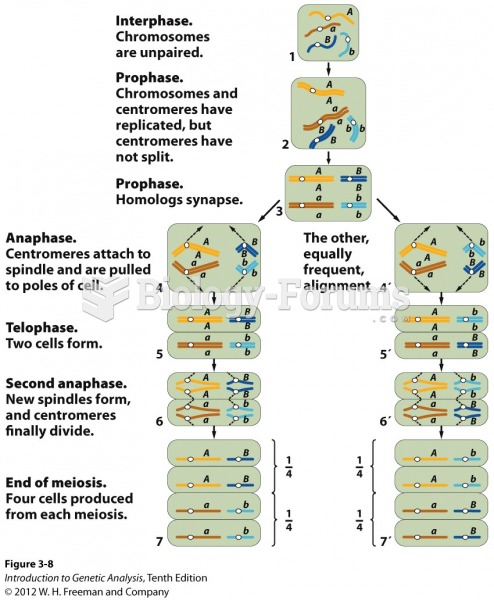|
|
|
The Centers for Disease Control and Prevention has released reports detailing the deaths of infants (younger than 1 year of age) who died after being given cold and cough medications. This underscores the importance of educating parents that children younger than 2 years of age should never be given over-the-counter cold and cough medications without consulting their physicians.
Only 12 hours after an egg cell is fertilized by a sperm cell, the egg cell starts to divide. As it continues to divide, it moves along the fallopian tube toward the uterus at about 1 inch per day.
Blood is approximately twice as thick as water because of the cells and other components found in it.
On average, someone in the United States has a stroke about every 40 seconds. This is about 795,000 people per year.
Human stomach acid is strong enough to dissolve small pieces of metal such as razor blades or staples.







